Design: Residence / Norway
View to a thrill
How a James Bond-inspired design brief inspired a home atop a rock in an Oslo suburb and brought its owners closer to nature.
On a rocky outcrop near central Oslo, an unconventional house looks out over Kolbotn, a residential area of otherwise conventional wooden houses and low-rise brutalist apartments. Nicknamed Edge House, the distinctive edifice is the family home of Mona Jensen and Morten Isachsen, the duo behind Norwegian jewellery brand Tom Wood, which was founded in 2013 and is known for its simple, elegant designs.
Access is via a narrow stairway, which has 52 steps that cut through rough granite boulders glinting with quartz crystals. As you ascend, the seven load-bearing pillars that support the house – which sits entirely over the stony slope – loom close, with pine saplings seeding into the nooks and crannies of the surrounding rock. Then, at the top, 12 metres above street level, you reach even ground as the stairway opens out into a garden.
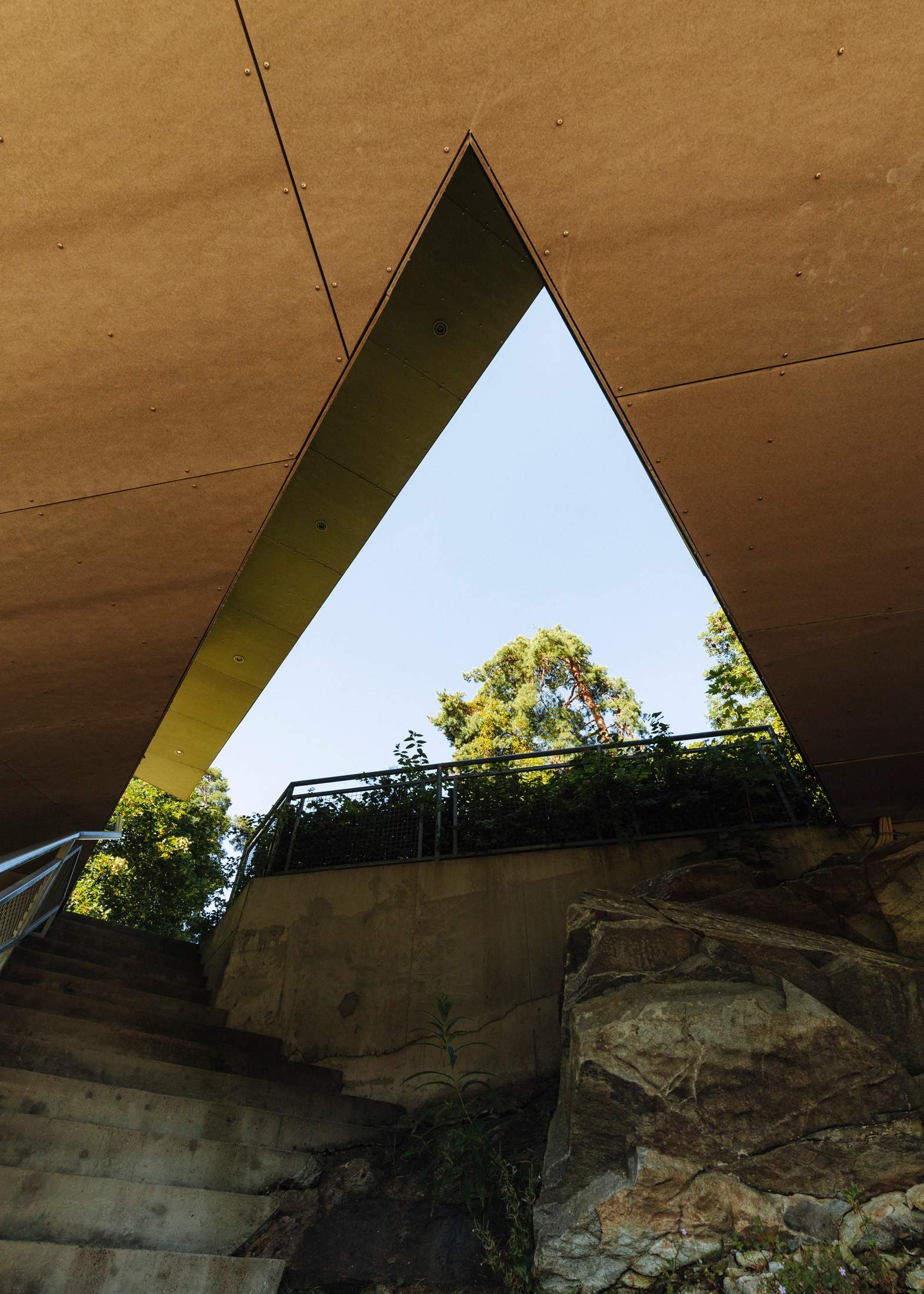
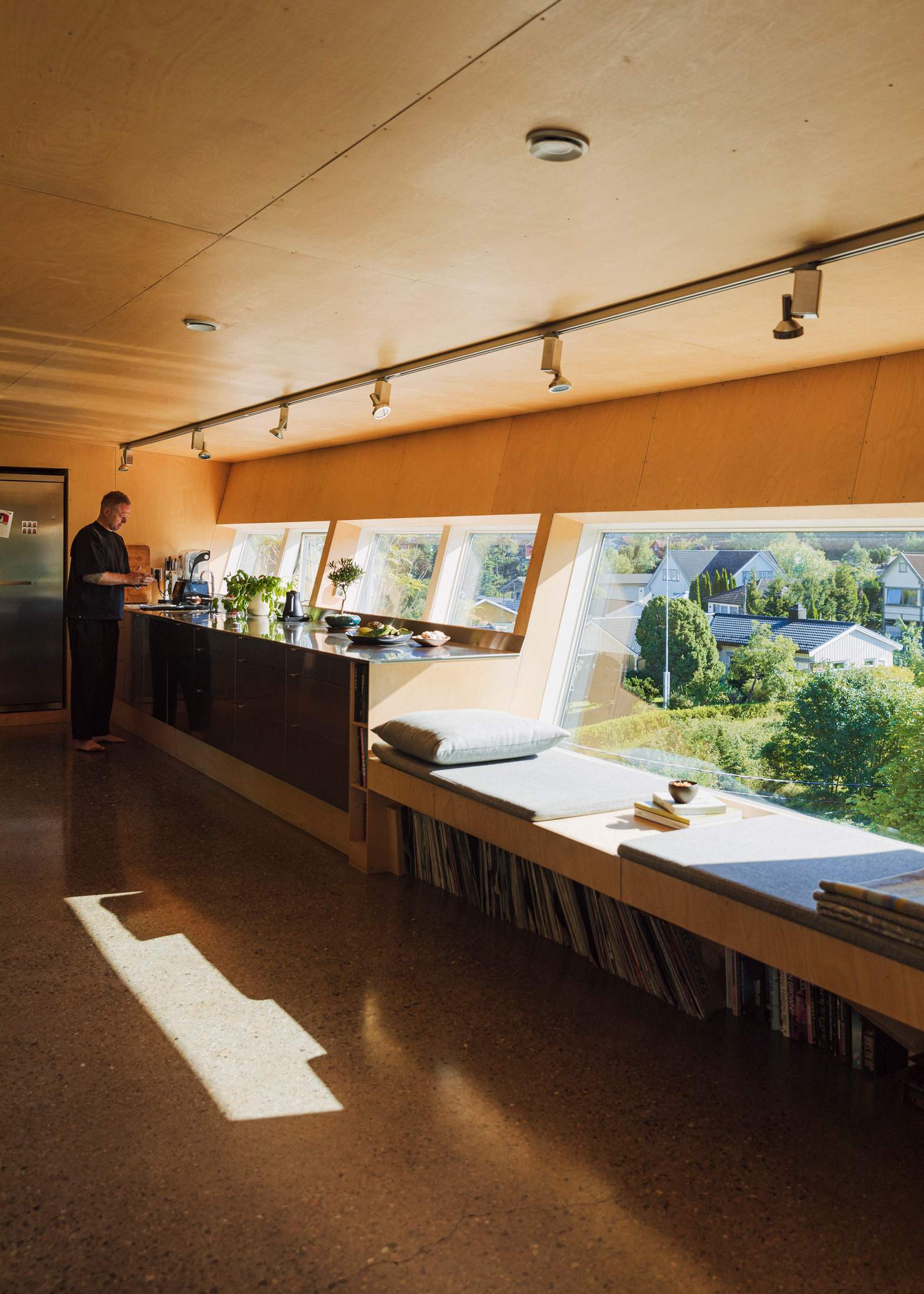
Edge House was an ambitious undertaking for Jensen and Isachsen. After living in apartments in central Oslo, they were spurred by a desire to move to a home where their children would have more space to run around among greenery. For the couple, who grew up in bucolic Stord and Tromsø, it was also about regaining a connection to nature.
To do so, they enlisted Oslo-based architects Einar Jarmund & Co, to whom they submitted a somewhat unorthodox initial brief in 2006. “We sent them the James Bond theme song and asked, ‘Can you make us a house like this?’” says Jensen. “They were our dream architects at that time but we were very young and couldn’t really afford them. So they told us to save up some more money. We did and came back a year later but still had a very limited budget.”
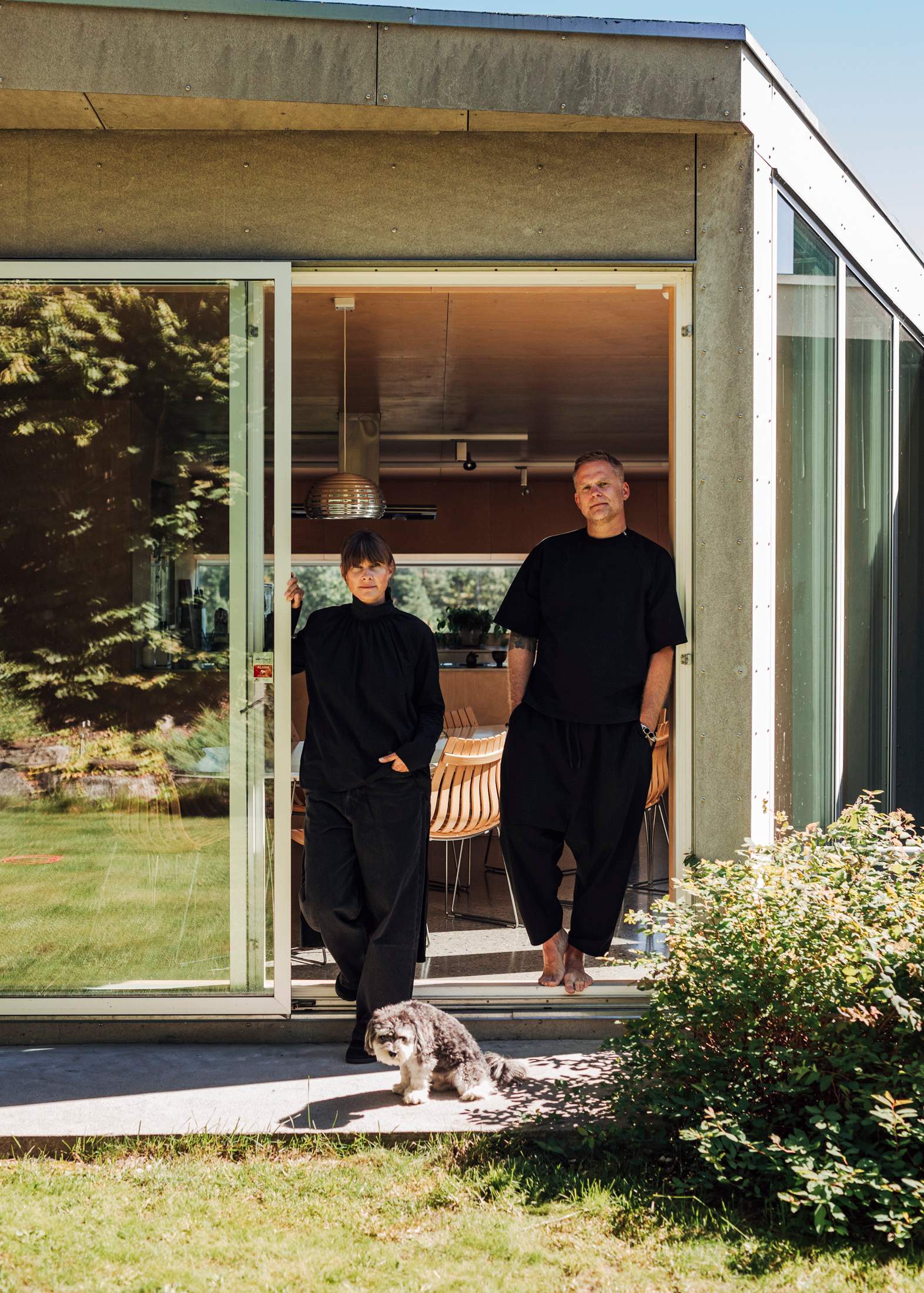
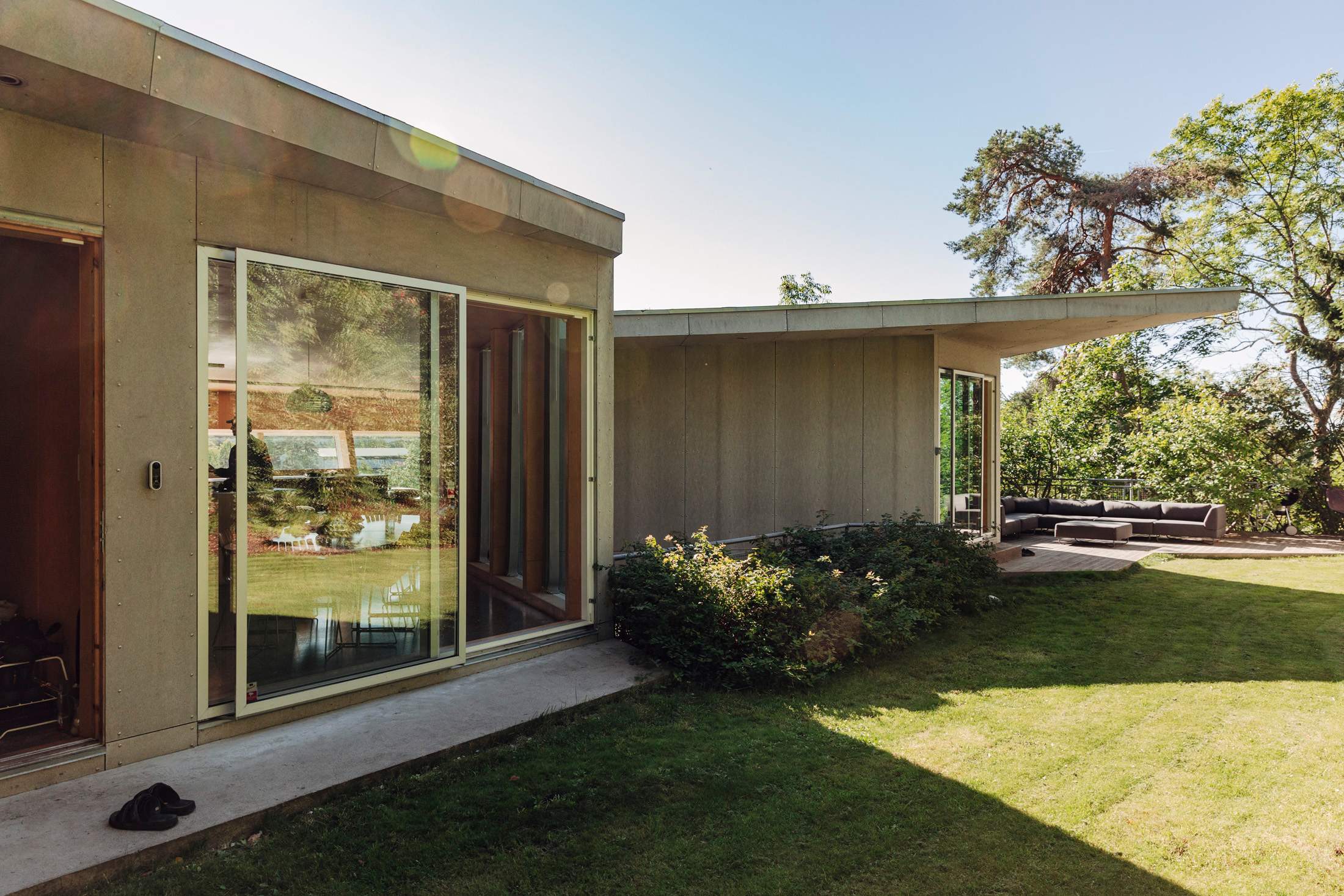

Ultimately, Jensen and Isachsen wanted to build a home that, much like their clean-lined jewellery, wouldn’t age in terms of style or integrity. “Building a house is a significant project, something that most individuals or families do only once in their lifetime,” says Isachsen. “It prompted us to ask what kind of footprint we wanted to leave on this planet. Is building a house truly necessary? And if the answer is yes, how can I design a home that will not only stand the test of time but remain relevant and sustainable for many decades – perhaps even a century?”
In response to these questions, rudimentary raw materials were chosen for their hardiness, cost efficiency and durability. The exterior of the house is clad in fibre cement panels that, like a giant Meccano set, are screwed in place, allowing easy access to the structure of the building for repairs. It was a relatively new technique at the time of construction; the couple had heard of its use in The Oslo School of Architecture and Design, which was also built by Einar Jarmund & Co. “If one panel gets damaged, you can change it and don’t need to tear down the whole façade,” says Jensen. “You don’t have to paint it or do anything to it for 100 years,” adds Isachsen. “It just stays and looks the same.”


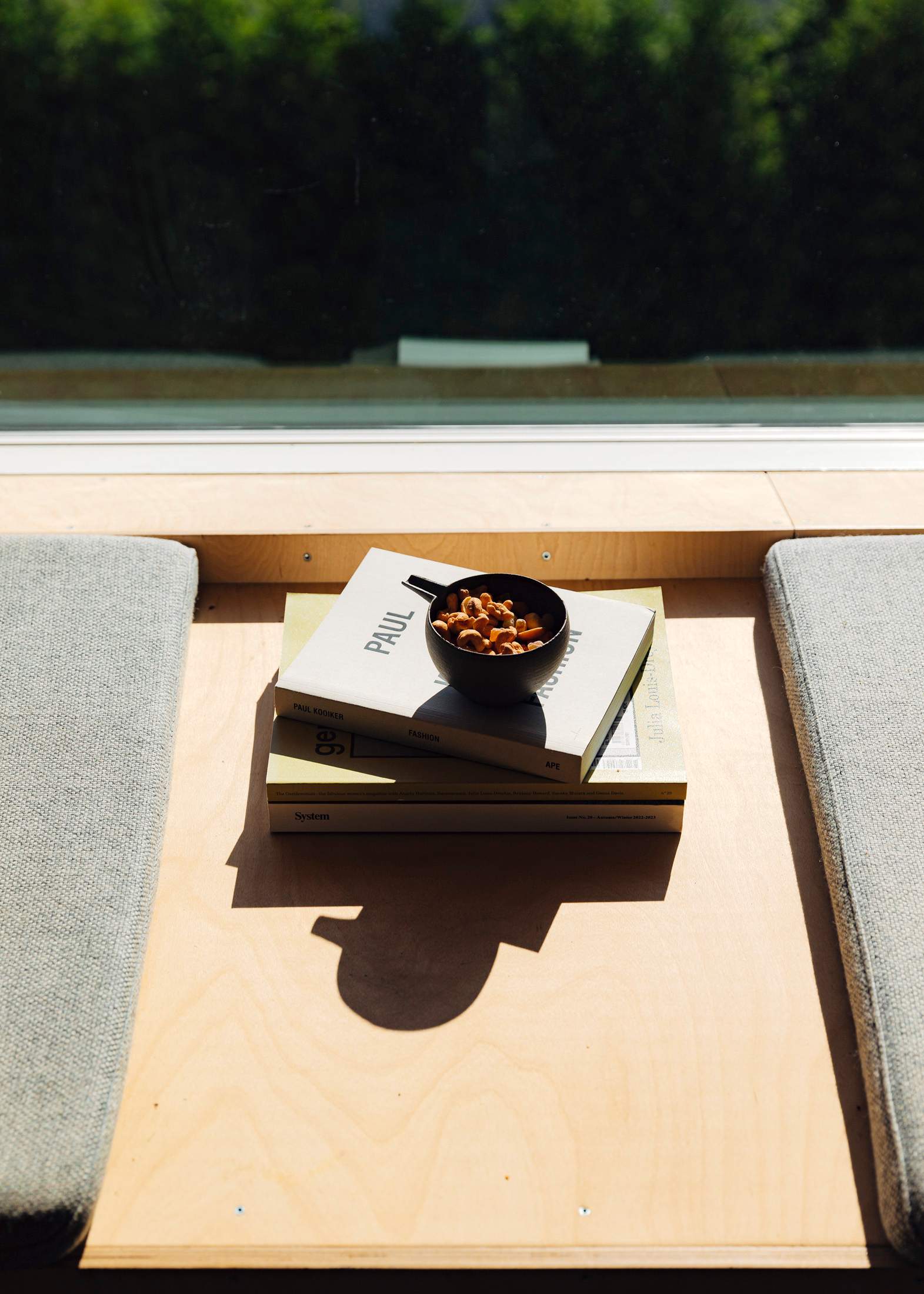

There’s a practical simplicity to the home’s interiors too, with the walls clad entirely with birch veneer, with no paint or wallpaper, and no skirting boards or highly finished edges. A sizable steel bench-counter is the heart of the kitchen – both in terms of activity (Jensen and Isachsen like to cook) and in presence. Appropriately, the finishes match the look of Tom Wood’s Oslo flagship shop, where similarly steely surfaces create a common visual thread that links the couple’s home and creative venture – even though Jensen says that her work as a jeweller didn’t influence the house directly. The home’s concrete terrazzo floors, reminiscent of those found in Venetian piano nobile, are also found at the Tom Wood office, which was opened after the house was built. (Perhaps it was the residence that influenced the brand.)
Set across one floor, almost every room in the house is oriented towards – and opens out onto – the garden. Cultivated by a Japanese landscaper with particular attention given to the seasonality of its vegetation, it has copses of trees and flower beds that bloom in the warmer seasons. “In summer especially, the house becomes twice as big because it’s all on one level, with windows towards the garden,” says Isachsen. “We constantly move from indoors to outdoors.”
Built in 16 months on a 900 sq m plot of land (an area about the size of 3.5 tennis courts), the house was designed to work in harmony with the landscape. “When the architects came here, they got the idea to put the house on the edge of the plot, destroying as little of the existing vegetation as possible and creating this very private garden,” says Isachsen. “There was very little demolishing that had to be done.”
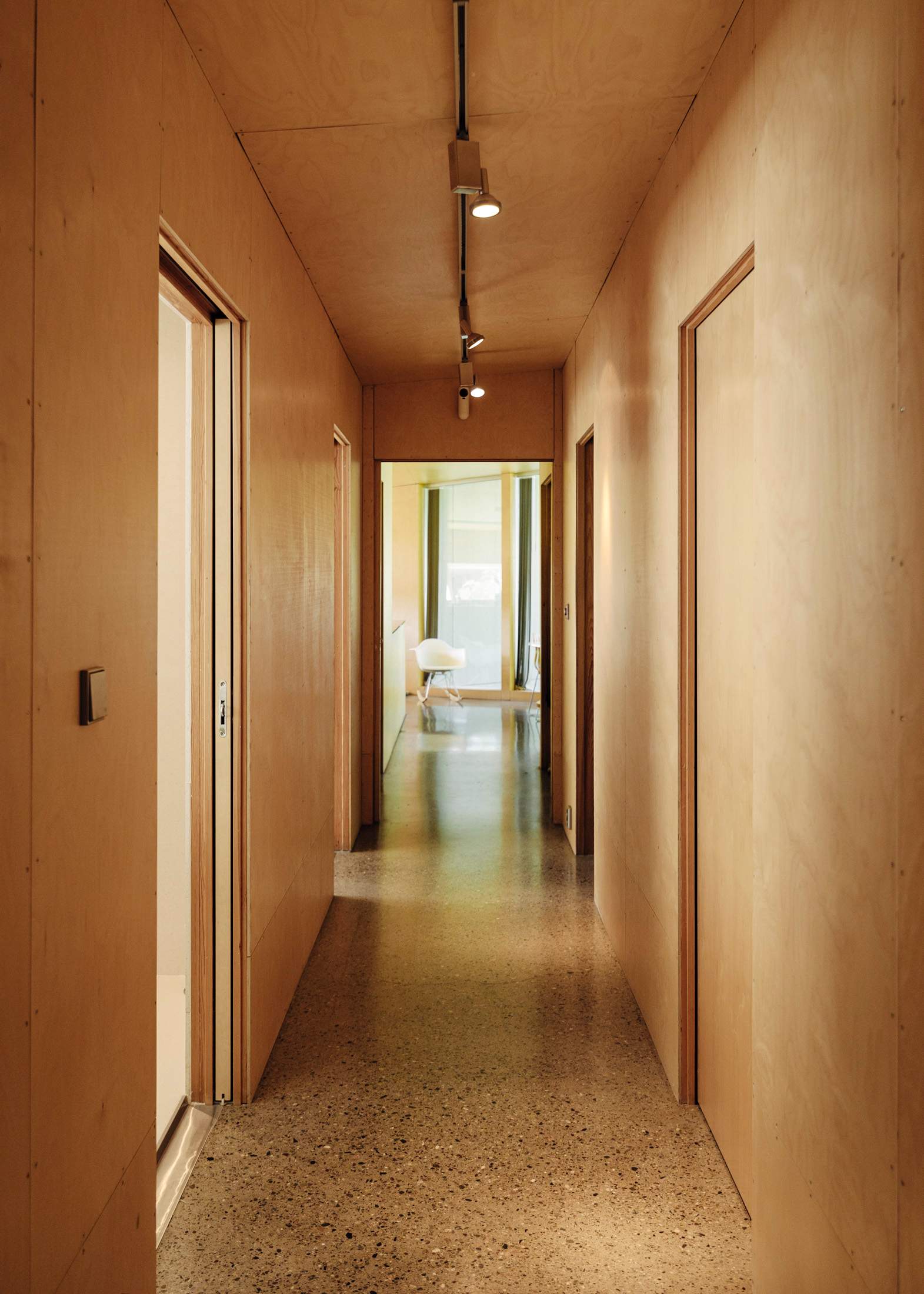
Despite its imposing appearance on its rocky perch, the house isn’t a behemoth. It was originally just 210 sq m with three bedrooms. Following a 2018 extension, it now occupies 258 sq m, when an extra bedroom and a study-cum-entertainment room were added after the couple’s children complained of living on top of each other. The addition is marked by a transition from light to dark as you walk from the luminous open-plan living and dining area towards the bedrooms through a softly lit birch-panelled corridor, evoking a winding down of energy and indicating that you are heading to a place of relaxation.
The furnishings, meanwhile, reflect the couple’s personal tastes and their journey through life. There’s a big collection of vinyl (Isachsen is a former DJ) and a larger-than-life portrait of Norwegian musician Turbonegro, taken by Aleksander Nordahl, which presides over the living space. A colossal suar-wood coffee table that the couple brought back from Bali takes centre stage in the living room. Throughout the home, you’ll find a mix of modernist, postmodernist and contemporary furniture from designers such as Terje Ekstrøm and Andreas Engesvik, and brands including Fjordfiesta and Italy’s Flos.
A bespoke “thinking bench”, cushioned with Norwegian woollen textiles, starts at the end of the steel kitchen counter and extends into the living space, butting up against the plate-glass window and defining a clear sightline to the undulating neighbourhood beyond – it’s a psychotherapist’s couch with a view.
Jensen and Isachsen are part of a wave of now-established Nordic creatives who are breaking out of the mid-century mould that has come to define design in the region. Their home is reflective of this: it’s exactly what one would expect from cool industry leaders. Appropriately, when monocle visits, both are dressed head to toe in black, with Jensen drifting elegantly in a vintage Celine shirt and Hermès loafers and Isachsen wearing an asymmetrical-zip White Mountaineering top and capacious slacks. They appear totally at ease in their natural habitat but they’re quick to explain that there were times when they didn’t always have such confidence in the home’s creative form. “I cried when I saw the mock-up model of the house,” says Jensen. “I thought it was horrible. I expected something practical and easy to understand. This was hypermodern. There were so many angles and corners – it was entirely new.”
Isachsen, on the other hand, thought that it was exciting. “He said, ‘It’s only four walls and a roof – it’s a house,’” Jensen tells monocle. She explains that she soon came around to the originality of the design. Now, she can’t imagine living anywhere else – at least for the foreseeable future.
The architecture, says Jensen, has enriched their lives over the past 16 years. She explains that one of the keys to its success was that it reflected their ideals. “To me, a home is a place that holds a family together and needs to work with its different phases. We spent a lot of time thinking about which rooms and functions a house needed to have, to work for us the way we like to live.” For Jensen and Isachsen, it turned out that living on the edge doesn’t mean having to be totally out of your comfort zone. — tomwoodproject.com


